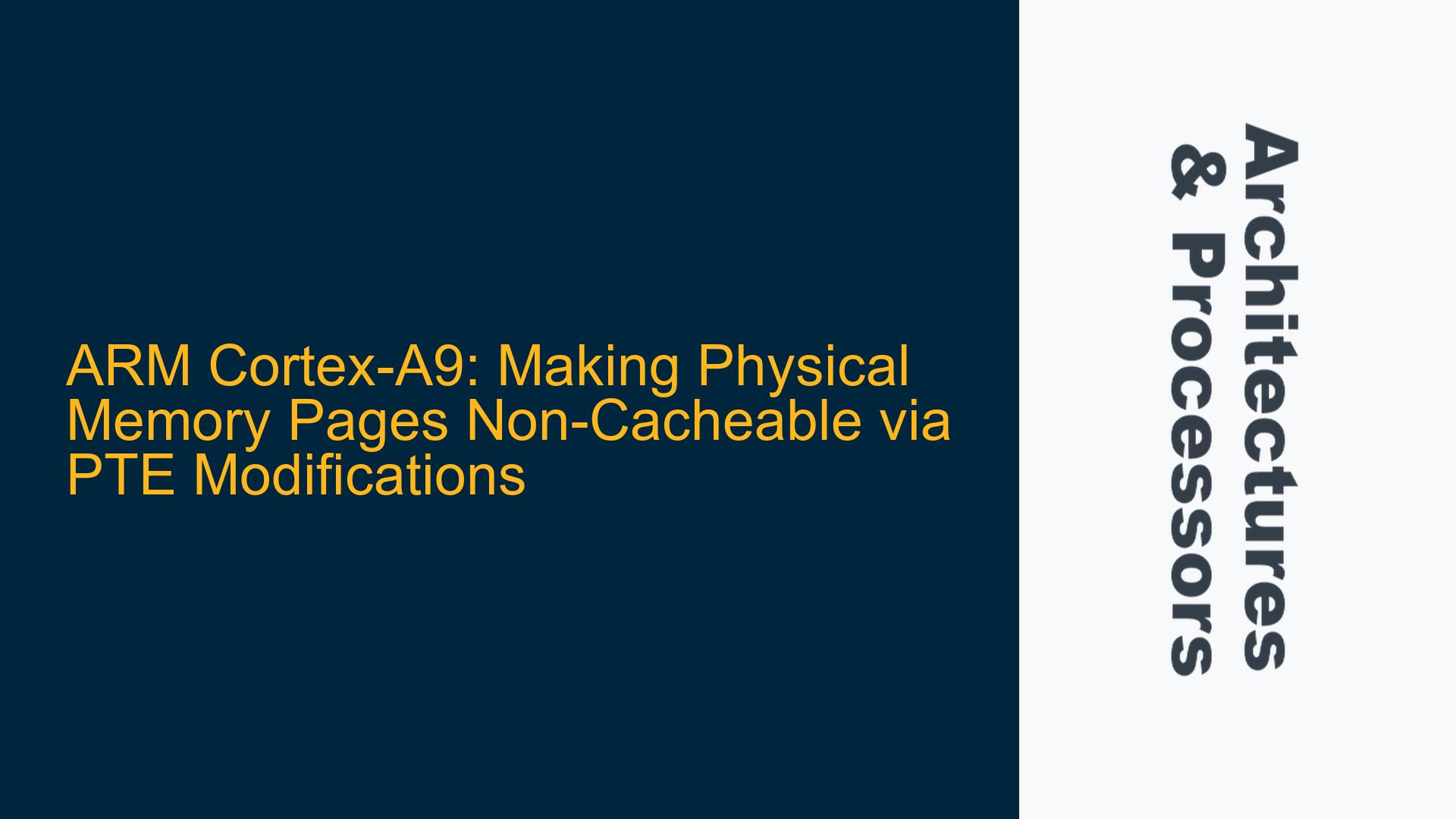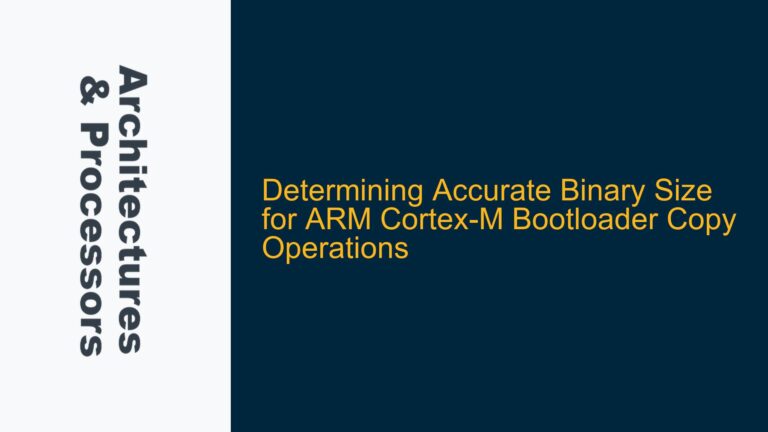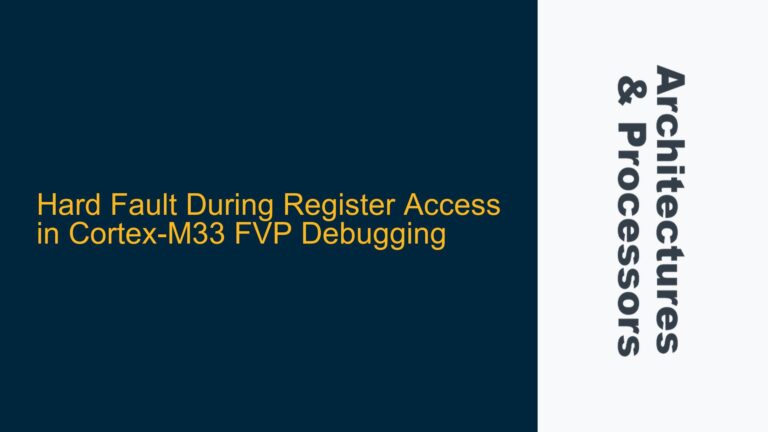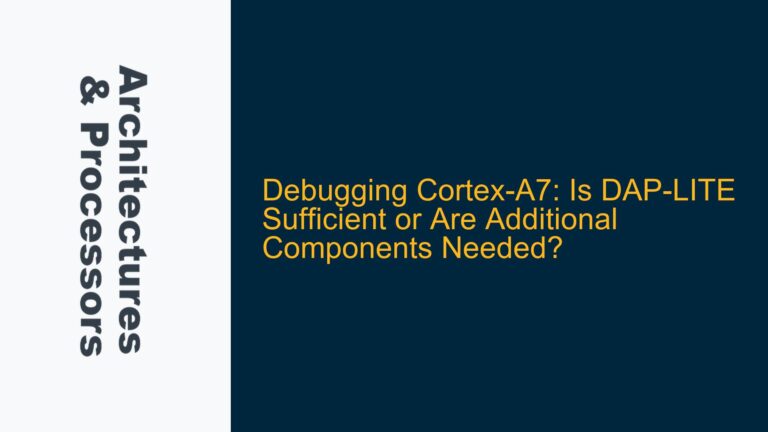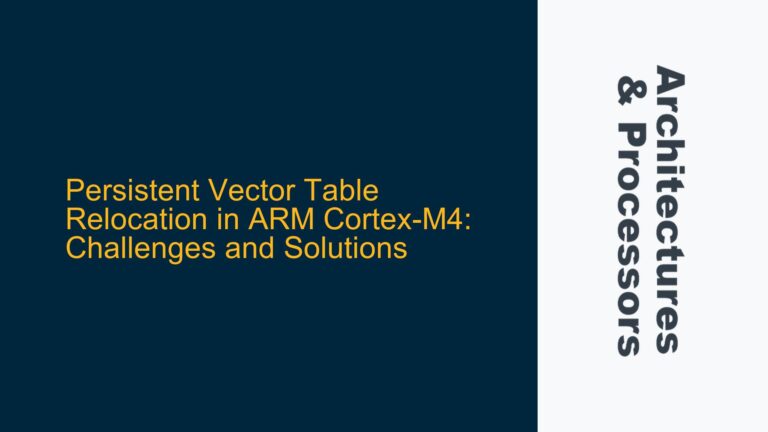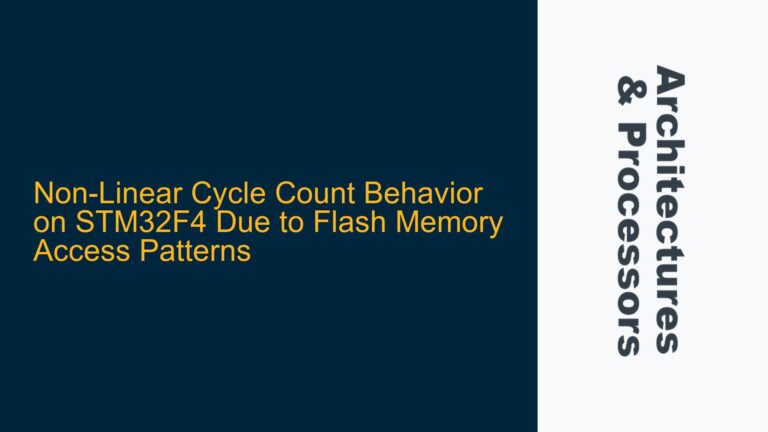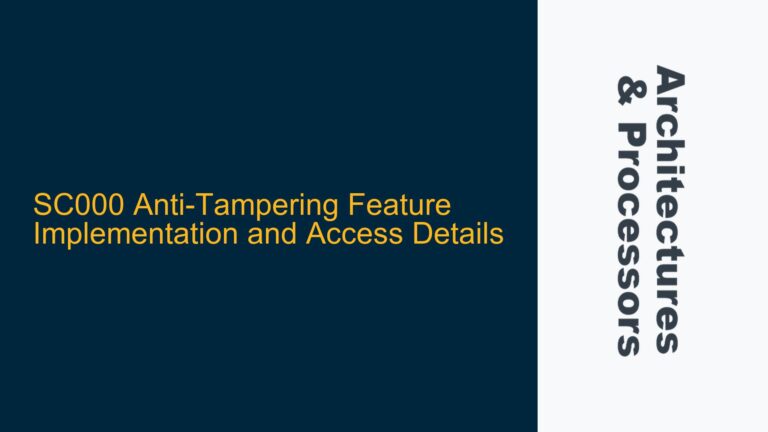ARM Cortex-A9 Cacheability Control via Page Table Entries
In ARMv7 architectures, such as the ARM Cortex-A9, memory cacheability is controlled through specific bits in the Page Table Entries (PTEs). The Cortex-A9 employs a two-level translation table system, consisting of the Page Global Directory (PGD) and the Page Table Entry (PTE). The PTE contains critical bits that determine the memory type, including cacheability. Specifically, the C (Cacheable), B (Bufferable), and TEX (Type Extension) bits in the PTE dictate whether a memory page is cacheable or not. Modifying these bits allows developers to control the cacheability of specific memory regions.
The challenge arises when attempting to make physical memory pages non-cacheable. The kernel provides functions like pgprot_noncached() to modify the cacheability attributes of a Virtual Memory Area (VMA). However, simply passing the vma->vm_page_prot to pgprot_noncached() may not result in the expected changes to the PTE. This discrepancy suggests that additional steps, such as explicitly setting the PTE using functions like set_pte_ext(), may be necessary to enforce the desired cacheability attributes.
Understanding the relationship between the VMA, PTE, and the underlying hardware is crucial. The VMA represents a virtual memory region in the kernel, and its vm_page_prot field holds the protection flags for that region. When pgprot_noncached() is called, it modifies these flags to indicate that the memory should be non-cacheable. However, these changes must be propagated to the actual PTE in the page table for them to take effect. This propagation is not always automatic, especially when dealing with custom memory mappings or specific hardware configurations.
Memory Type Configuration Bits and Kernel Function Misalignment
The primary cause of the issue lies in the misalignment between the kernel’s memory management functions and the hardware’s memory type configuration bits. The ARM Cortex-A9’s memory type is determined by the C, B, and TEX bits in the PTE. These bits are part of the memory attribute indirection registers (MAIR) in the ARM architecture, which define the memory types for different regions. When pgprot_noncached() is used, it modifies the protection flags in the VMA, but these changes may not automatically translate to the corresponding PTE bits.
Another potential cause is the lack of explicit synchronization between the VMA and the PTE. The kernel’s memory management subsystem may not immediately update the PTE when the VMA’s protection flags are modified. This delay can result in the PTE retaining its original cacheability attributes, even after pgprot_noncached() has been called. Additionally, the use of set_pte_ext() may be necessary to explicitly set the PTE with the new cacheability attributes, ensuring that the hardware recognizes the changes.
The complexity of the ARMv7 memory management system, particularly the interaction between the VMA, PTE, and hardware registers, can also contribute to the issue. The Cortex-A9’s two-level translation table system requires careful handling of the PGD and PTE to ensure that changes to the cacheability attributes are correctly propagated. Misconfigurations in the PGD or PTE can lead to unexpected behavior, such as memory pages remaining cacheable despite attempts to make them non-cacheable.
Implementing PTE Modifications and Cache Management
To resolve the issue of making physical memory pages non-cacheable on the ARM Cortex-A9, a systematic approach involving explicit PTE modifications and cache management is required. The following steps outline the process:
-
Modify the VMA Protection Flags: Begin by using
pgprot_noncached()to modify the protection flags of the target VMA. This function sets the appropriate flags to indicate that the memory should be non-cacheable. However, this step alone may not be sufficient to change the PTE. -
Explicitly Set the PTE: After modifying the VMA protection flags, use
set_pte_ext()to explicitly set the PTE with the new cacheability attributes. This function ensures that the changes are propagated to the actual page table entry, making them effective at the hardware level. Theset_pte_ext()function takes the PTE and the new protection flags as arguments, allowing for precise control over the cacheability attributes. -
Invalidate the TLB and Cache: After modifying the PTE, it is essential to invalidate the Translation Lookaside Buffer (TLB) and cache to ensure that the changes take effect immediately. The TLB stores recent translations between virtual and physical addresses, and invalidating it forces the system to reload the updated PTE. Similarly, invalidating the cache ensures that any cached data from the now non-cacheable memory region is flushed, preventing stale data from being accessed.
-
Verify the Changes: Finally, verify that the changes to the PTE have taken effect by inspecting the PTE and testing the memory region’s cacheability. This step ensures that the memory pages are indeed non-cacheable and that the system is functioning as expected.
By following these steps, developers can effectively make physical memory pages non-cacheable on the ARM Cortex-A9. The key is to ensure that changes to the VMA protection flags are explicitly propagated to the PTE and that the TLB and cache are properly managed to enforce the new cacheability attributes. This approach leverages the ARMv7 architecture’s memory management capabilities while addressing the specific challenges of the Cortex-A9 processor.
In conclusion, making physical memory pages non-cacheable on the ARM Cortex-A9 requires a deep understanding of the ARMv7 memory management system, including the role of the VMA, PTE, and hardware registers. By carefully modifying the VMA protection flags, explicitly setting the PTE, and managing the TLB and cache, developers can achieve the desired cacheability attributes and ensure reliable system performance.
